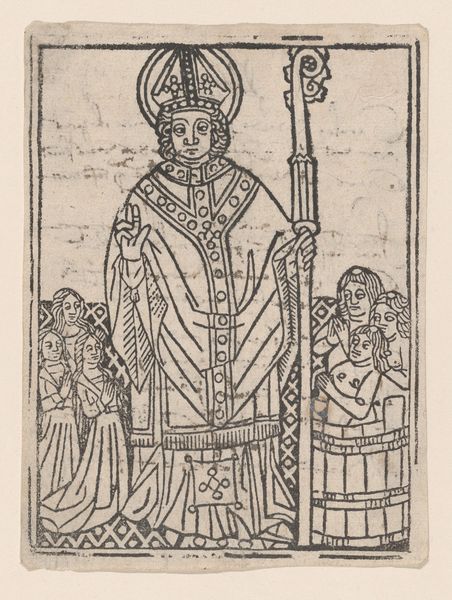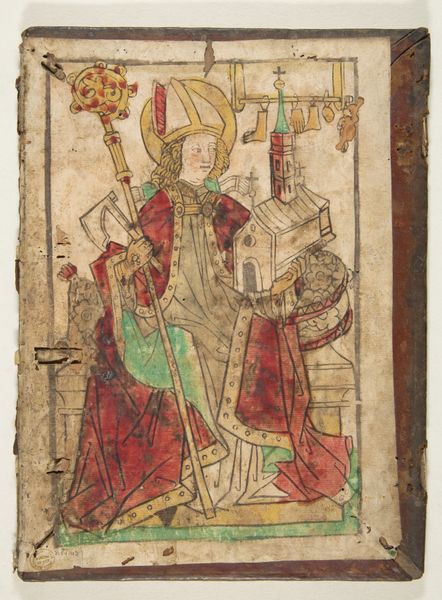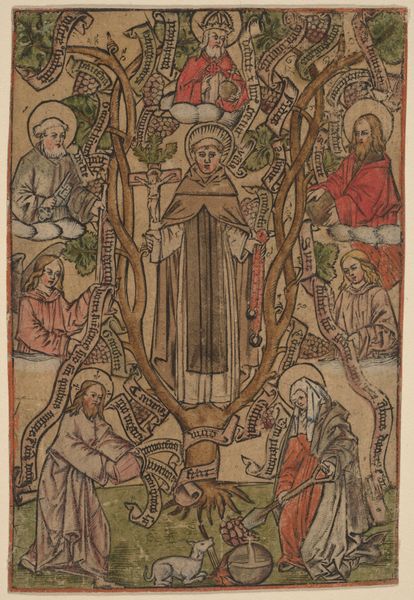
tempera, painting, wood
#
portrait
#
medieval
#
water colours
#
tempera
#
painting
#
figuration
#
wood
#
history-painting
Dimensions: 34.3 × 26 cm (13 1/2 × 10 1/4 in.)
Copyright: Public Domain
Curator: Standing before us is "Saint Blasius," a tempera painting on wood, crafted sometime between 1820 and 1840 by Antonio Molleno. You can find this piece here at The Art Institute of Chicago. Editor: There's an arresting directness to it. I immediately think of folk art—raw and untamed. The figure seems almost hesitant, vulnerable somehow, even with that candle. Curator: It's fascinating how you pick up on that vulnerability. These devotional images served very specific functions in their communities. They acted almost as intermediaries between the earthly realm and the divine, so the depiction had to be simultaneously relatable and authoritative. Editor: Right. It's the tug-of-war between the accessible and the unattainable that makes it so engaging. Look at that shield – clunky and unrefined. The artist wasn’t striving for photorealism, but a deeper emotional resonance. It feels almost dreamlike. Curator: I agree; it departs drastically from academic painting traditions. While produced later, Molleno’s choice of tempera and wood nods towards the material culture of medieval icon painting. The visible wood grain and limited palette, were probably much more impactful in its original context within a home or small church. Editor: Definitely a reminder of the painting's journey—from private devotion to public display in the Art Institute. I love picturing its whole history. What do you think its continued display does for our relationship with images of saints? Curator: Well, it definitely shifts it. Seeing the piece divorced from its liturgical purpose asks us to contemplate the image differently—as art object, as historical artifact, as a cultural signifier. The aura surrounding the icon is transformed. Editor: So, maybe this Saint Blasius, by being here, is offering us a new type of benediction, a permission slip to approach it with openness and a little creative mischief. Curator: Precisely. And hopefully sparking curiosity about the painting’s initial community uses and devotional power. Editor: Amen to that.
Comments
No comments
Be the first to comment and join the conversation on the ultimate creative platform.













